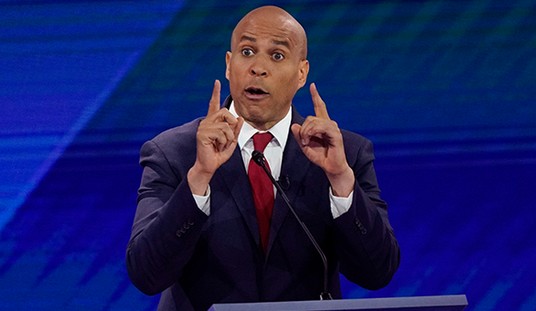One of the more positive ancillary benefits of this presidential primary season is the newfound focus on taxation, regulation, and energy production. The prominence of the presidential election has helped jumpstart a vital discourse on long-term reforms for those three policies.
The RSC, which is the most respected conservative group within Congress, has proposed a jobs growth plan today, which seeks to achieve those reforms, albeit in a more inclusive way than some of the proposals from presidential candidates, like Rick Perry, Newt Gingrich, and Herman Cain. It appears that they are seeking changes to the tax and regulatory system that have already received broad support within the Republican party (and some lip service from Democrats, in regard to certain provisions), and are bundling them into one package, “The Jobs Through Growth Act.”
Here are some of the major provisions of the proposal:
Taxes
Much like Rick Perry’s flat tax plan, the RSC bill would offer an optional transition to a new, flatter system; however, the details are slightly different. The RSC’s optional plan includes:
- Just two rates 15% (first $50,000 taxable income for single filers, $100,000 for joint filers) and 25% (taxable income above that);
- A standard deduction of $12,500 for single filers and $25,000 for joint filers;
- An additional deduction of $12,500 for each dependent; and
- No other individual deductions or credits or exclusions
- Also, after the initial choice is made, individuals are allowed one additional changeover
between the two systems. Individuals are also allowed to
change tax systems when a major life event (death, divorce, marriage) changes their tax filing status.
Governor Perry’s plan offers one 20% tax rate, while this plan has two tax brackets; 15% and 25%, but excludes any and every deduction, including the market-distorting mortgage interest deduction (retained in both Perry and Gingrich plans) and the deduction for state and local taxes (retained in Perry’s plan). Both plans include a $12,500 standard deduction and dependent deduction (Gingrich’s is $12,000).
It is important to note that under all of these plans, including the new RSC bill, lower-income earners, who enjoy positive tax liabilities, will still have the option of staying in the new system and receiving the Earned Income Tax Credit. Also, many middle-class single filers, who only receive one $12,500 deduction, but incur a large mortgage, might opt for the old system as well. The RSC option would really benefit large middle and upper class families, who don’t receive refundable credits and pay a higher marginal rate under the current system. Overall, when coupled with the option to remain in the current system, this bill would reduce tax rates to the lowest level in 80 years.
Other major provisions of the bill include changes to the current system as well:
- “Reduces America’s top corporate tax rate from 35% to 25%. The legislation also directs the House Ways and Means Committee to identify tax deductions and credits that could be eliminated and to report legislation transitioning the U.S. to a territorial tax system.” Also, they would seek to eliminate the pernicious employer healthcare exemption.
- Permanently repeals AMT and Death Tax
- The legislation lowers the tax on foreign-earned profits repatriated by U.S. corporations to 5.25% for one year
- Permanently keeps CapGains taxes at 15% (Bush tax cuts). Additionally, it eliminates the government’s ability to impose CapGains taxes on the value of the investment that rose due to inflation.
In terms of revenue, this plan is modeled after the Taxpayer Choice Act of 2007, which would have produced revenues commensurate to 18% of GDP – the RSC spending target level proposed in Cut, Cap, and Balance.
Again, when compared to some of the more transformational plans from the presidential candidates, the RSC bill is not as extensive. On the other hand, it does set the table for a complete elimination of all credits and deductions. This will have the effect of eliminating market-distortions in housing and healthcare, while ending the incentives for states to levy high taxes. It is also a plan that can, and should, pass the House right now, while placing the onus on Harry Reid to oppose it. When coupled with the spending side – Cut, Cap, Balance, this is the boldest plan being proposed within Congress.
Regulations
- The REINS Act: requires congressional approval for all regulations with a projected cost that exceeds $100 million. This is a good piece of legislation that already has the support of the Republican leadership and the entire caucus.
- Places an immediate moratorium on new regulations until unemployment dips below 7.7%
- Provides regulatory relief to small businesses by raising the designation of a small business from 50 employees to 200, and by allowing them to opt out of all regulations promulgated since 2007
Energy Production
- Consumer Relief for Pain at the Pump Act: This is a comprehensive bill that we highlighted a while back. It identifies all of the main impediments to increased energy production, and seeks to eliminate them. The bill opens up all federal lands and waters to drilling, eliminates restrictions and regulations on land use, offers a revenue sharing scheme with states, streamlines the permit process, and most importantly, reforms the judicial review process for eco-lawsuits against the energy sector. [more information here]
- Expedites approval of the Keystone Pipeline project
Here is a video presentation of the premise behind the bill:
The RSC has been instrumental in injecting the outside conservative voice into the halls of Congress. They conceived the idea of Cut, Cap, and Balance, which has now become a major cornerstone for national conservative policy. This plan is relatively modest in comparison to CCB. As such, it is our hope that the entire Republican conference adopts the proposal – for real this time.













Join the conversation as a VIP Member